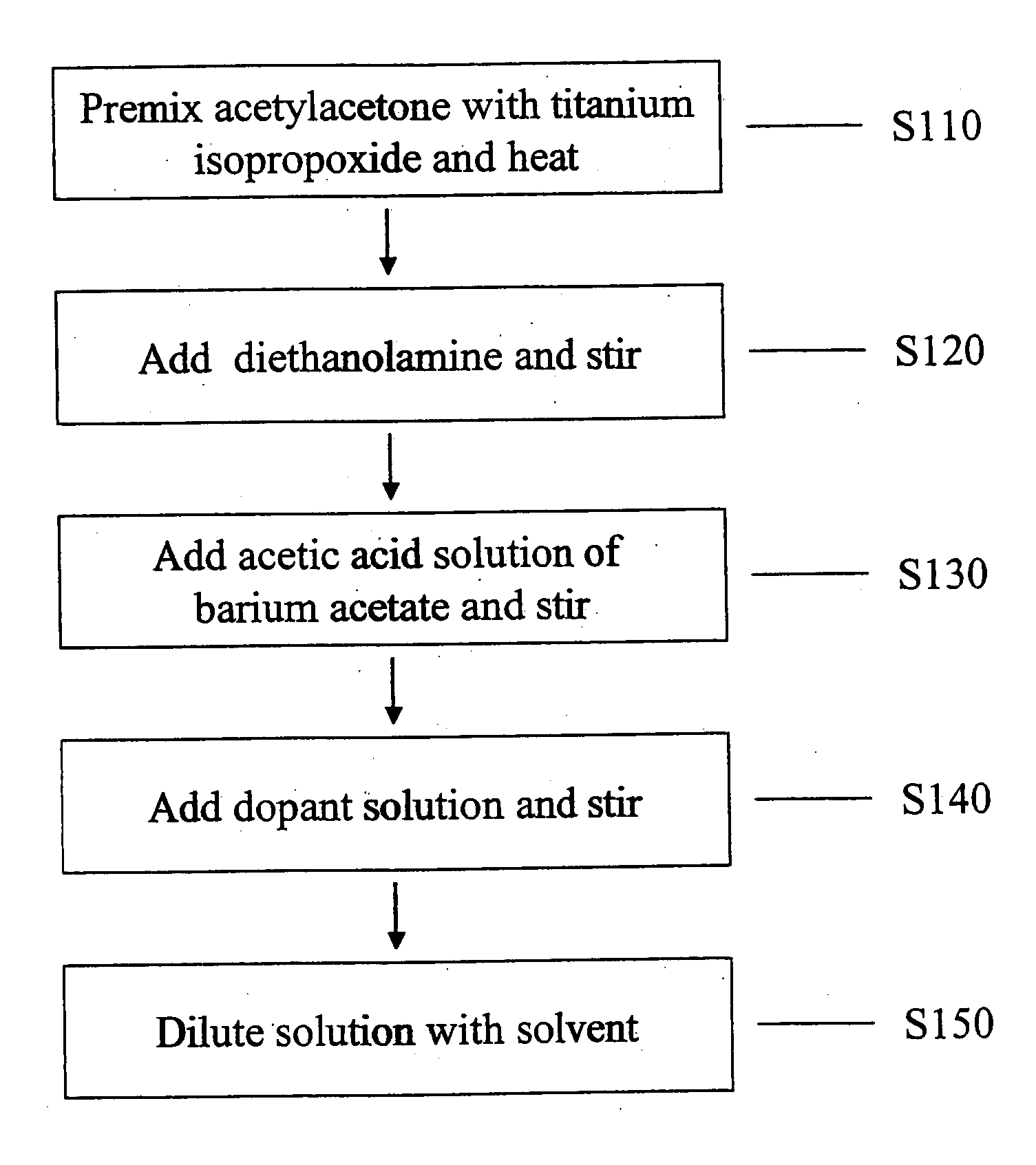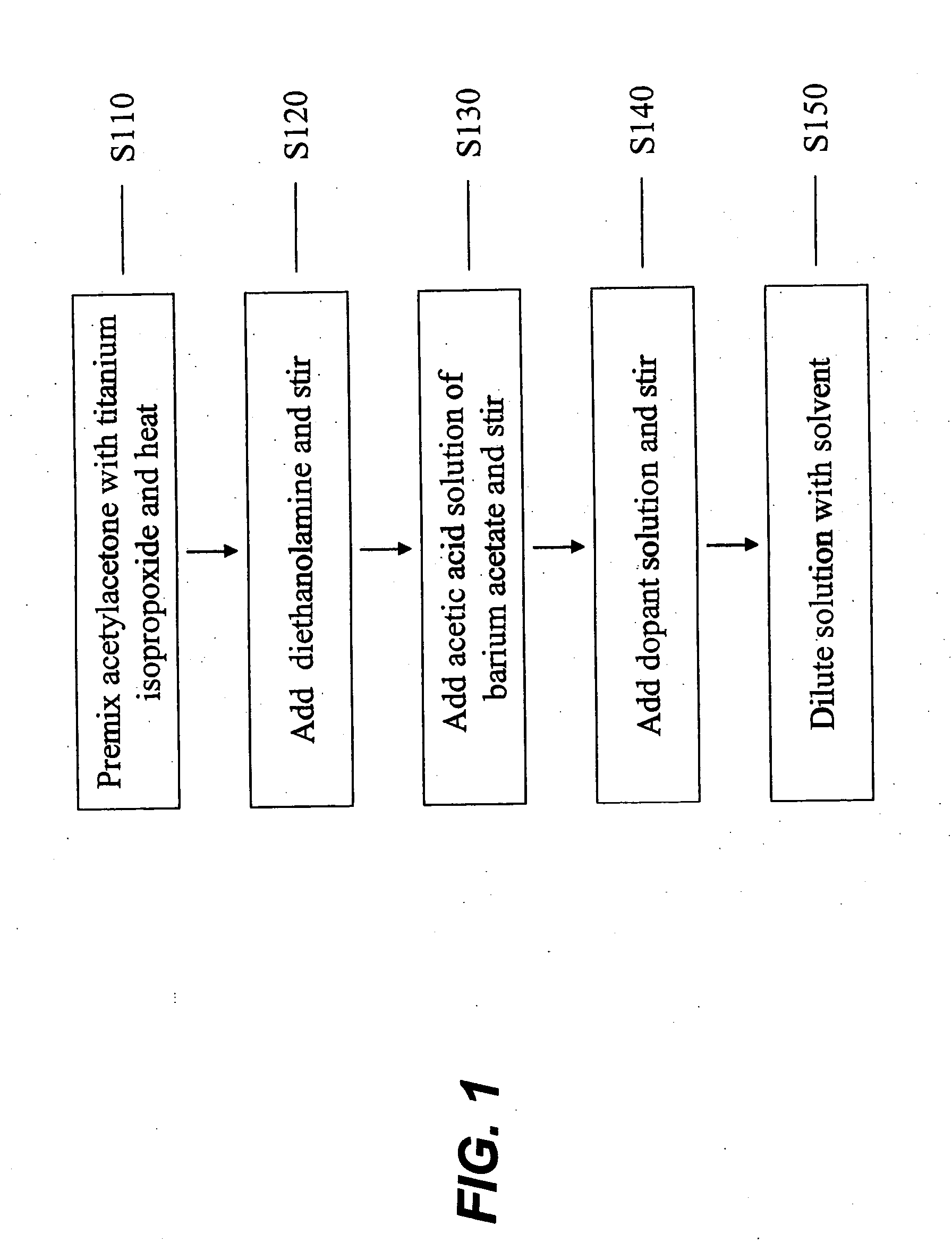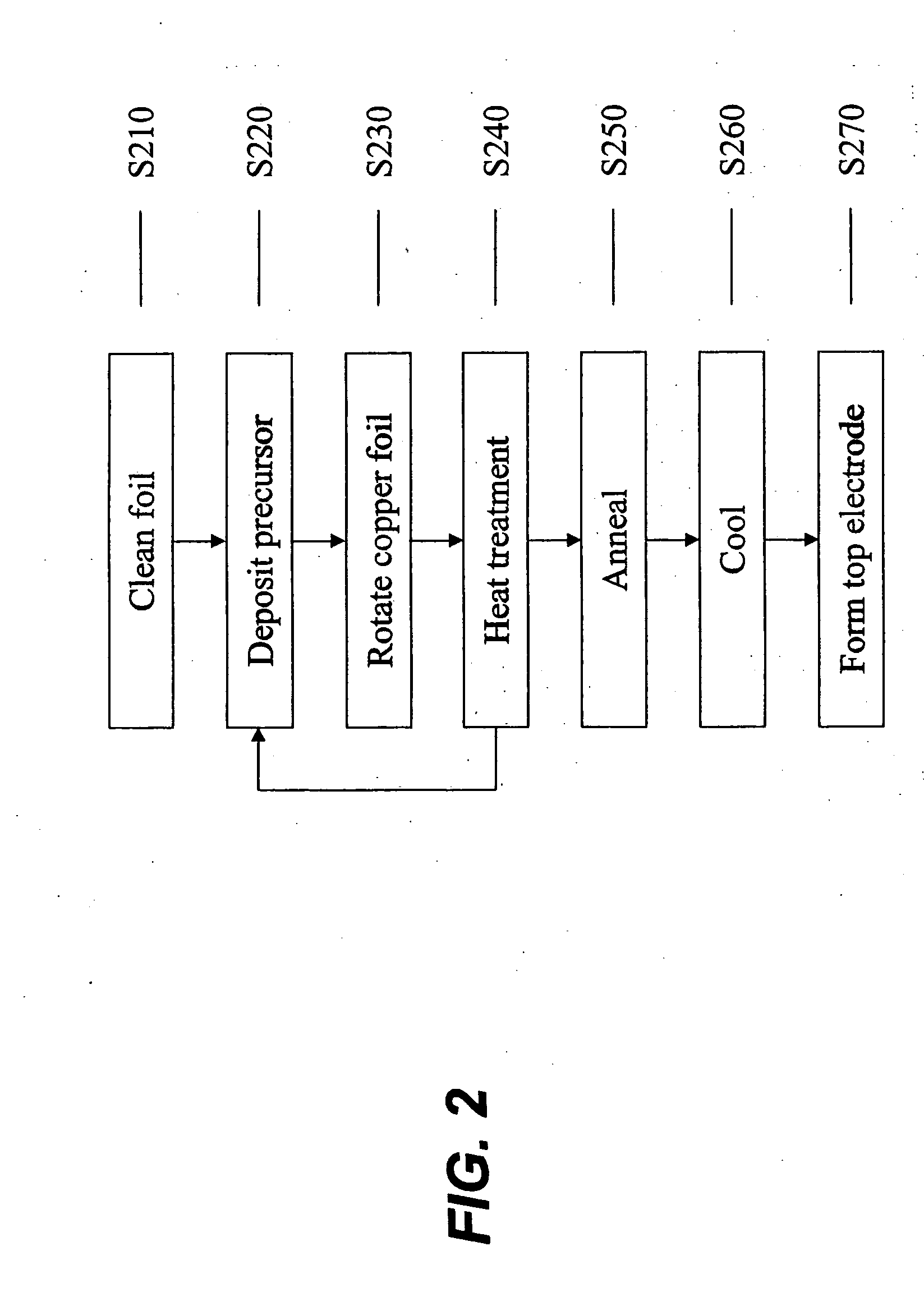Acceptor doped barium titanate based thin film capacitors on metal foils and methods of making thereof
a technology of barium titanate and acceptor, applied in the field of thin film capacitors, can solve the problems of microprocessors experiencing voltage drop or power droop, power overshoot, and high leakage current under applied bias (current densities)
- Summary
- Abstract
- Description
- Claims
- Application Information
AI Technical Summary
Benefits of technology
Problems solved by technology
Method used
Image
Examples
example 1
[0060] An undoped pure barium titanate thin film was prepared on a copper foil using the formula listed below and prepared as outlined in FIG. 1. The copper foil was coated with the dielectric precursor composition using the method outlined in FIG. 2.
Barium acetate2.0gTitanium isopropoxide2.22gAcetylacetone1.56gAcetic acid17.0gDiethanolamine0.21g
[0061] The formula was then spin-coated on Cu foil. After each coat the film were pre-baked at temperatures at 250° C. on a hot plate in air. The coating / pre-baking process was repeated six times. The coated copper foil was annealed at 900° C. for 30 minutes under a partial pressure of oxygen of approximately 10−11 atmospheres. After annealing the pure barium titanate, a platinum top electrode was sputtered on to the dielectric and the capacitance, dissipation factor and leakage current density under bias was measured. The capacitance density was approximately 1.5 μF / cm2 at 0 volt but the loss tangent increased dramatically in the voltage ...
example 2
[0062] An undoped pure barium titanate thin film was prepared on a copper foil using the formula listed below and prepared as outlined in FIG. 1. The copper foil was coated with the dielectric precursor composition using the method outlined in FIG. 2.
Barium acetate2.0gTitanium isopropoxide2.22gAcetylacetone1.56gAcetic acid17.0gDiethanolamine0.21g
[0063] The formula was then spin-coated on Cu foil. After each coat the film were pre-baked at temperatures at 250° C. on a hot plate in air. The coating / pre-baking process was repeated six times. The coated copper foil was annealed at 900° C. for 30 minutes under a partial pressure of oxygen of approximately 10−11 atmospheres. The dielectric was then re-oxidized by placing the foil in a vacuum chamber under an atmosphere of approximately 10−5 Torr of oxygen at 550° C. for 30 minutes. This condition was chosen to avoid significant oxidation of the copper foil while still providing oxygen for re-oxidation of the dielectric. After re-oxidati...
example 3
[0065] A gallium doped barium titanate thin film was prepared on a copper foil in the similar manner described in EXAMPLE 1 using the precursor solution described below. The gallium dopant solution comprised the chemicals listed in Table I:
Barium acetate2.0gTitanium isopropoxide2.22gAcetylacetone1.56gAcetic acid17.0gDiethanolamine0.21gGallium dopant solution0.18g
[0066] The capacitance density and loss tangent for a gallium doped barium titanate layer without re-oxidation are shown in FIG. 6. The capacitance density was approximately 1.5 μF / cm2 at 0 volt and the loss tangent was ≦5 percent and the dissipation factor did not degrade under bias. As shown in FIG. 7, the gallium doped barium titanate without an oxidation procedure showed a low leakage current density of approximately 10 micro-amps / cm2 at 10 volts bias or approximately 100,000 times lower leakage current flow versus the re-oxidized undoped barium titanate.
PUM
| Property | Measurement | Unit |
|---|---|---|
| temperature | aaaaa | aaaaa |
| partial pressure | aaaaa | aaaaa |
| thickness | aaaaa | aaaaa |
Abstract
Description
Claims
Application Information
 Login to View More
Login to View More - R&D
- Intellectual Property
- Life Sciences
- Materials
- Tech Scout
- Unparalleled Data Quality
- Higher Quality Content
- 60% Fewer Hallucinations
Browse by: Latest US Patents, China's latest patents, Technical Efficacy Thesaurus, Application Domain, Technology Topic, Popular Technical Reports.
© 2025 PatSnap. All rights reserved.Legal|Privacy policy|Modern Slavery Act Transparency Statement|Sitemap|About US| Contact US: help@patsnap.com



